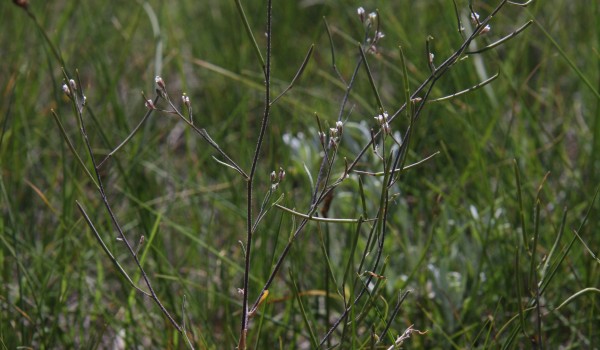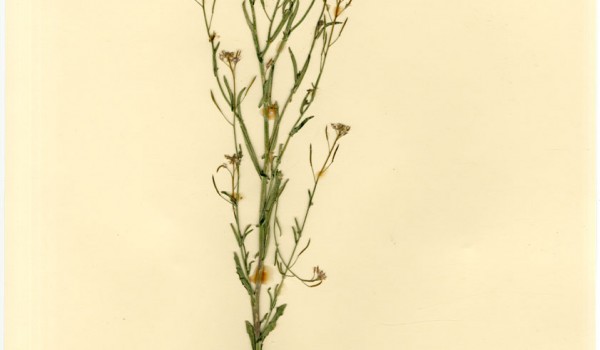Mustard (Brassicaceae)
Slender Mouse-ear Cress
Transberingia bursifolia ssp. virgata (Nutt.) Al-Shehbaz & O'KaneSlender Mouse-ear Cress is a rare plant that tends to grow in small patches of several to dozens of individuals. Populations often show large year-to-year variation in numbers and morphology, though causes for this are not well known. These plants are threatened by loss of habitat to urban and industrial development, agriculture, and other human activities. To date, pollinators have been largely undocumented.
Flower Colour:
- White
Flowering Season:
- Spring
- Summer
Flowering Months:
- July
- June
- May
Canadian Rarity Status:
Protected under Canada’s Species at Risk Act and Saskatchewan’s provincial Wildlife Act, and is considered “at risk” in Alberta. The collection of wild plants and seeds is illegal on public lands.
Physical Appearance:
This biennial varies from tall, branched, and robust to short, single-stemmed, and thin. Its greyish, hairy stems grow to 35 cm tall. Thin, egg-shaped leaves with wavy edges occur in a basal rosette and along the stems. Flowers are about 4 mm long, and have four white petals with pinkish veins and four hairy sepals. These are arranged into elongated clusters of up to 24 flowers each. Fruits are cylinder-shaped capsules containing numerous small seeds dispersed by wind, water, or animals.
Similar Species:
Hairy Rock-cress (Arabis hirsuta (L.) Scop.), Reflexed Rock-cress (Arabis holboellii Hornem)
Gardening Notes:
Do not purchase wild-collected seeds or plants. Seeds and/or plants from nursery-raised stock may be available.
Canadian Distribution:
- Alberta
- Saskatchewan
Prairie Types:
- Mixed Grass Prairie
Habitats:
- Depressions
- Hillsides
- Prairies
Moisture Conditions:
- Dry
- Moderate
- Moist
Light Preference:
- Full Sun
Soil Preference:
- Alkaline
- Sand
- Silt







